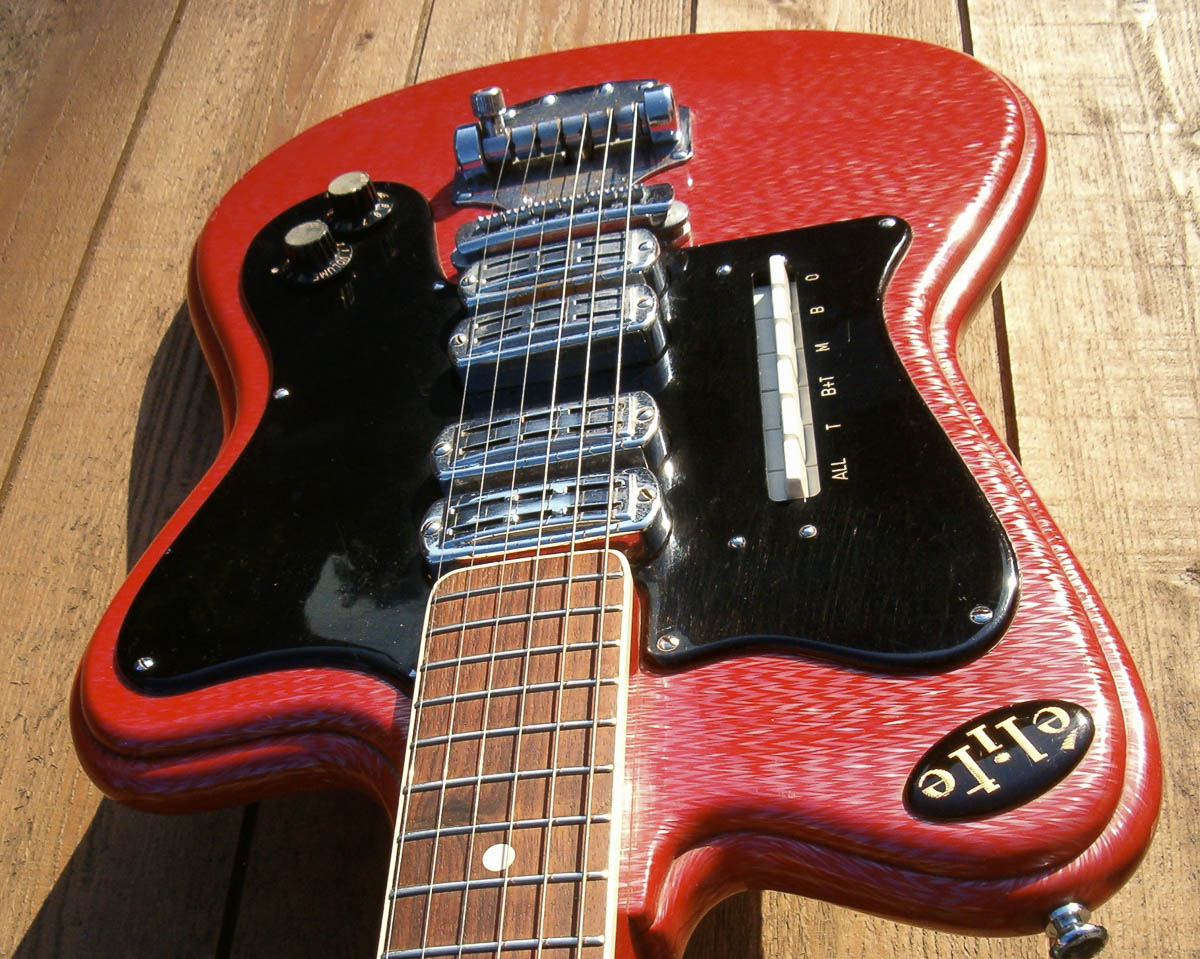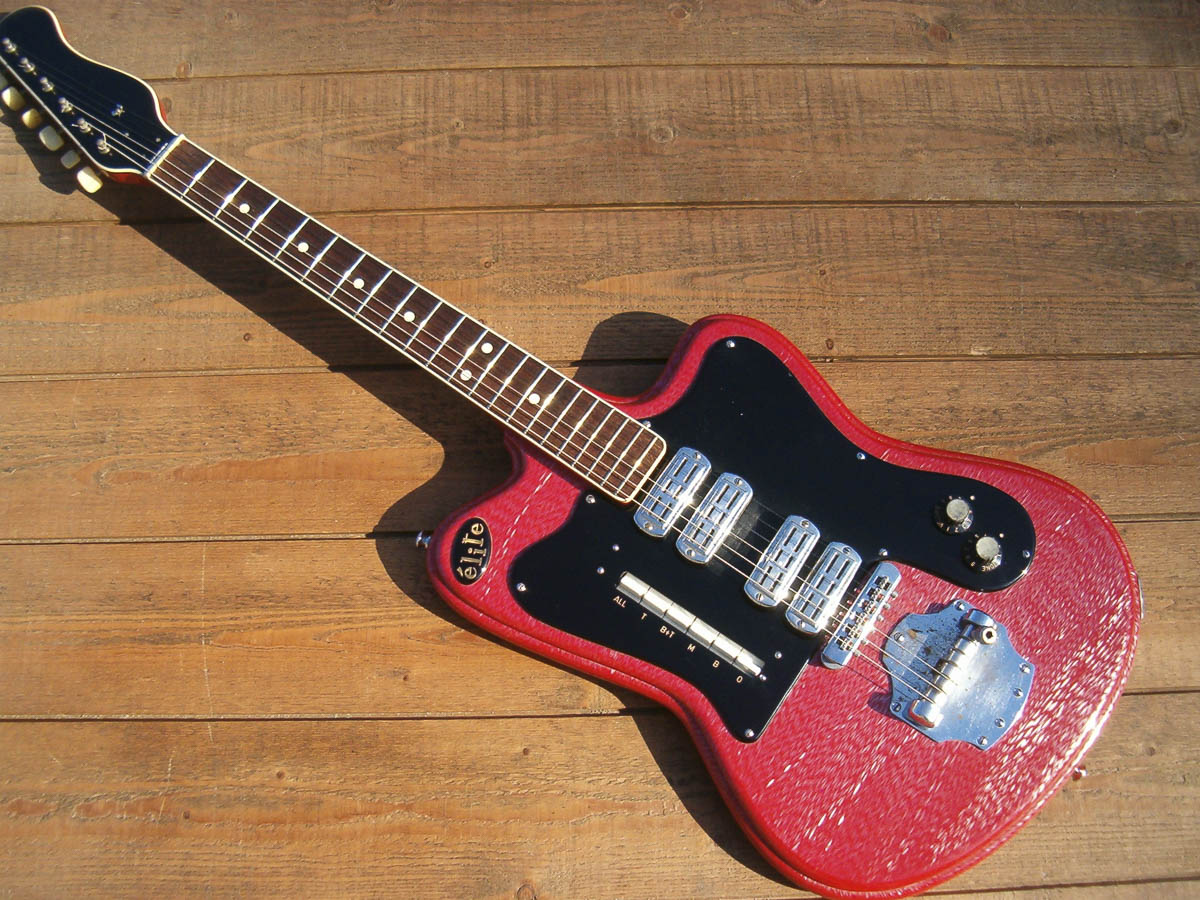Crucianelli solid bodies: 1963
by Jack Marchal
1963 Ardsley 40, blue
A clean all original Ardsley of 1963 — which means components could have been made in 1962 or the guitar assembled in 1964 (years of manufacture given in this section are to be taken with a +/-1 error margin but not more).
I believe Ardsley was a big retailer in New York. Pickups and electronics are similar to those used at the same time by Welson, Gemelli and Bartolini. The only differences are the pickup metal casings and the type of switches. Note that those pickups are dual-coil: there are EIGHT coils in all aboard this instrument! The rocker switches open pickup combinations as follows:
- ALL for… all.
- T for Treble, bridge pickup
- T+B for Treble and Bass, bridge and neck pickup
- M for Middle, both central pickups
- B for Bass, neck pickup
- 0 for Zero, cutout.
These are the same combination offered by Eko guitars but arranged in a different and completely illogical order, neck pickup switch being located by the bridge pickup and vice versa (why? fear of infringing an Eko patent?). It is merely a matter of getting accustomed to it. I have been trying for years… Another nonsense is the cutout switch located at the end of the control stripe, in the most exposed position, where the player’s wrist moves or rests. For live playing I use a piece a white rubber to secure it, there is no other way for avoiding unwanted moments of silence. Apart from that, this switch stripe is not only the most reliable and silent of its kind, it’s the only one that really allows instant sound change by a stroke of the pick.
- Redesigned pickguard with the upper part parallel to body edge.
- New Crucianelli specific tremolo.
- Common.
Parte superiore del battipenna ridisegnata per seguire il profilo del corpo. Appare un nuovo vibrato specifico di Crucianelli. Comune


























































